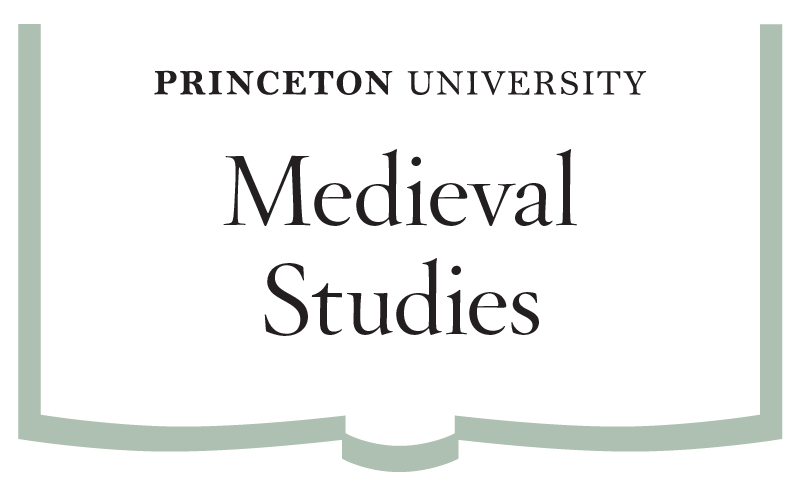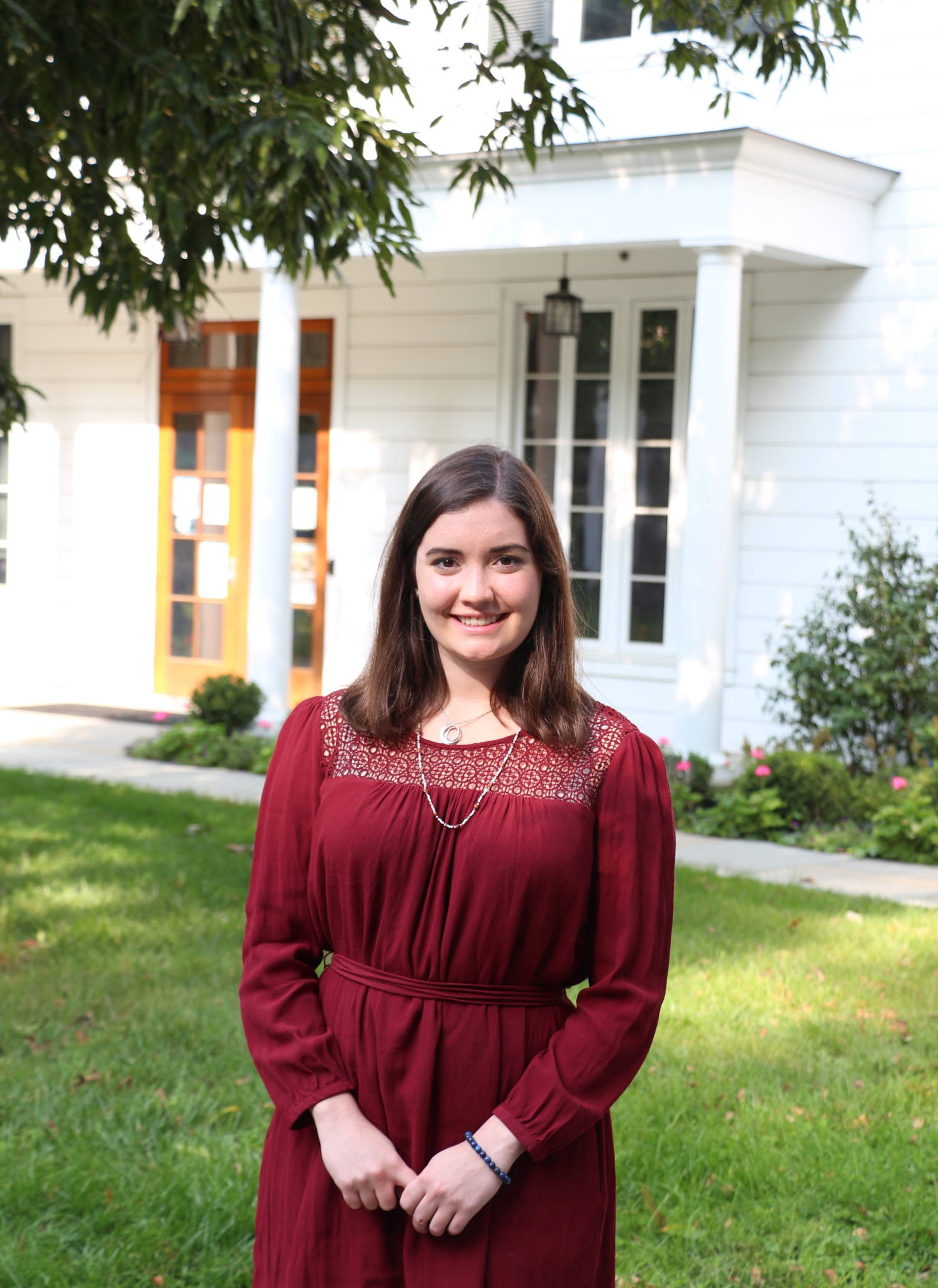History major Valerie Wilson ’18 is pursuing a certificate in Medieval Studies. In the following interview, she discusses how Medieval Studies has enhanced her academic journey. The program has not only revealed to her the significance of the Middle Ages, but also boosted her access to experts and artifacts, improved her ability to develop and convey original findings, and changed her perspective on contemporary issues like politics, religion, and culture.
What drew you to Medieval Studies?
My friend told me to take a history class that he heard was good, and I didn’t know what to major in, so I was open to anything. It was English Constitutional History taught by Bill Jordan. It counts as one of my electives now for Medieval Studies. That got me interested in the time period, which I hadn’t really thought about before. And I found the time period very entertaining. People didn’t take themselves too seriously. They were pretty ridiculous. The common narrative is that no one knew how to read and everyone was just dirty, running around doing peasant life, and that’s not true. So much of what we have in terms of arts and culture, and the fact that we have the classics, is because of the medieval period. I never knew that. I never had an appreciation for the sort of intellectual life that was going on at the time.
How has the Medieval Studies certificate program helped you?
Professor Sara Poor has been really helpful in setting me up with resources and providing guidance for my research interests. She wrote me a letter of recommendation last year. Having that more personal relationship with someone who’s directing the program has been great. It’s also nice being in classes with professors who are affiliated with the program, because they know that you’re serious and they’ll let you take the reins a little bit whenever the class is focusing on something that you know about.
The program requires a decent amount of class credit, so it’s made me think about my schedule, how I can prioritize what I’m interested in and still take a broad range of classes. I did the entire Latin sequence; I took a fascinating medieval music class in the Music department. Those classes tend to be small too, so they’re a good way to get to know people, and learn close up, and oftentimes you’ll get to do little extra things that give a little extra depth. The trips to the Cloisters, holiday parties, and hangouts in the Index of Medieval Art are fun.
Now, I think about history much more holistically. It’s easy in the discipline to get focused on the one thing that you’re studying, and not think about the cultural or scientific context. Being a part of a more holistic program has provided that sort of background, and given me guideposts for saying, “OK, this is what was happening in music, so I want to see if it was happening in another aspect of history during this time period.” Looking for whether those general patterns hold true has made my work more interesting.
Medieval Studies offers resources like a manuscript collection and a photographic archive called the Index of Medieval Art. How have these materials aided you?
The collections at Firestone are fantastic. The Index of Medieval Art is attached to the Art Museum. This extensive collection has tons of recall cards and great materials. For where we are, in an American university on the East Coast, a huge amount is available.
The way Medieval Studies can connect you with digital resources is also so important. You can get a lot of help for searching specific databases. We have a specialized librarian in Firestone, who would be the best resource in terms of research, just because the librarians tend to know the ins-and-outs of the archives, but the professors can also give good advice. It’s such a small program with such a high caliber of faculty that you can get a lot of personal attention. Many of these websites will have scanned manuscripts from libraries all over the world that you can just look at, click on and print out.
You took the introductory seminar to Medieval Studies, MED 227 / HUM 227: The World of the Middle Ages. What excited you most about it?
The seminar explored topics like medieval concepts of self, humanity, and God; nation-building, conquest and crusade; relations among Christians, Jews, and Muslims; literacy, heresy, and the rise of vernacular literature; and gender, chivalry, and the medieval court. It helps give you a new perspective on the world. For example, not all women were tied to the home, and many of them were engaged in public, intellectual activities. In terms of international relations, these topics show you how commerce and wealth have shifted over the years. It’s interesting to learn about the economic dominance of the Middle East and Byzantium, and how they were so much wealthier than Europe, which had practically no goods to offer.
Regarding religion, the persecution of the Jews drove them together in a tragedy that has been going on since the beginning of the faith. You get a perspective on that and how Muslims were viewed differently. As sad as it is to say, a lot of the same old religious conflicts remain. But religion made up the fabric of daily life much more and greatly influenced the politics. Secular governments were not as powerful as they are today. That’s why I study bureaucracy in the Church; they were the most organized ones and had a centralized system. It’s interesting considering how dominant religion was in the fabric of that world, how different groups were able to interact to some degree. Understanding when conflicts arose and why can teach us how these things end up happening, and how we can best avoid them — how powerful belief can create wonderful art and music, but needs to be coupled with acceptance of other religions to prevent persecution and destruction.
What aspects of the Middle Ages should continue to capture our imaginations today?
The art and the literature inspire people so much. Look at how big Game of Thrones is. Granted, that’s fantasy, but people have started to care more about what actually happened during the period because of the setting of those stories, and they’ve realized how crazy people’s political imaginations often were in reality. Chivalric tales are the root of fairy tales and Disney princesses that people are endlessly obsessed with; they have such a hold on the human imagination, and medieval epics share the same quality. Many philosophical ideas, like those of Aquinas, are still powerful today. Musical developments led to counterpoint, which is why we have Bach and Mozart. I didn’t appreciate how rich this period was until I started studying it in earnest. It has a lot of fundamental elements of culture which resonate with people no matter which era they are from and form the root of the stories that we still like to hear today, the art and the music that move us. The University Chapel is modeled on a medieval cathedral in Oxford, and is one of the most inspiring buildings on campus. Gothic church architecture continues to inspire. The Middle Ages is the period that has a grasp on what pushes humans’ buttons, what we’re drawn to.
How would you encourage students to enroll in the Medieval Studies certificate?
Monty Python is a parody, but it’s also not too far off-base. It’s so funny to read about this stuff. People would use crude humor in the presence of the king and no one cared. The king would be like, “Haha, that’s a great joke!” and make his own. It’s amazing looking at society before it had a lot of the filters that the Renaissance and modernity have put on it. Everyone, even if they were noble, was much more down-to-earth. Learning about that shows how people in a sense haven’t changed; we all still share much of the same humor and ways of relating to one another. You think of feudalism and all those sorts of systems as very rigid, and economically they were, but socially they weren’t. It’s really fun. It’s not like Game of Thrones. It’s not as violent or illiterate as people think. People had a lot of original thought, but also felt a lot freer to express themselves. That makes for a very honest historical record, which is interesting to study because often, with later documents, you have to peel away layers of people projecting their own self-perception or trying to impress others. People just believed so firmly in their beliefs and were unafraid to write them down. You get a vivid picture of society in one of the livelier periods of history available to us. You appreciate how rich inner lives were in the past.
By Ruby Shao ’17













